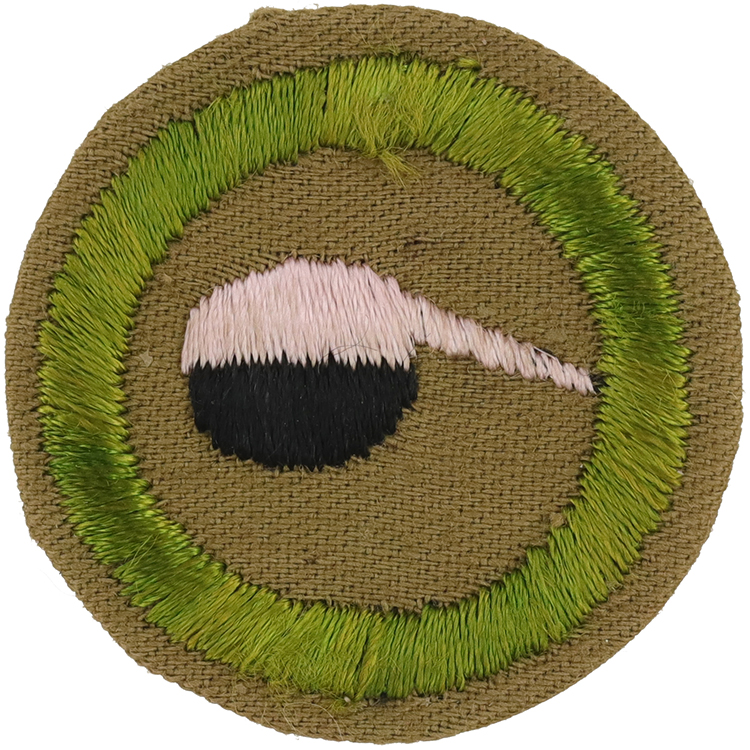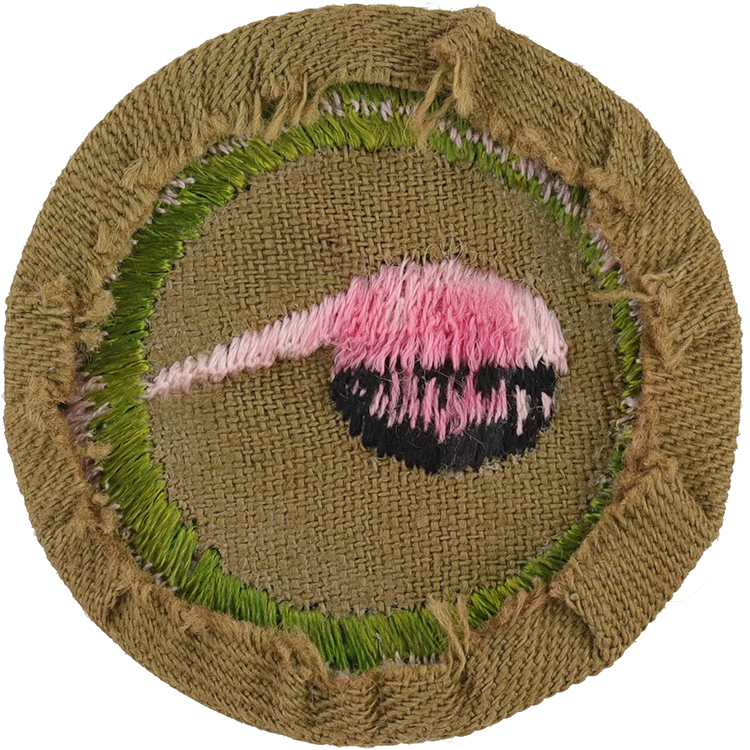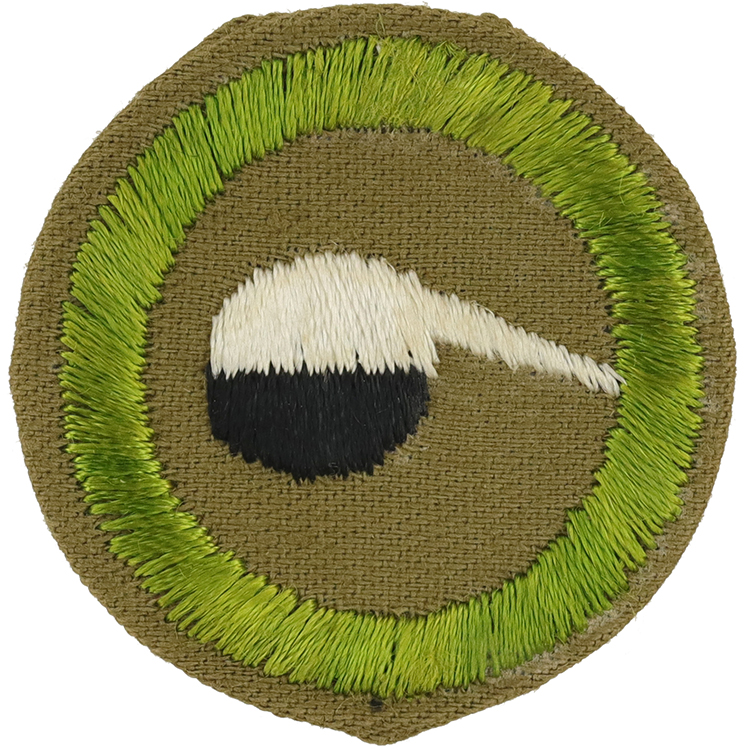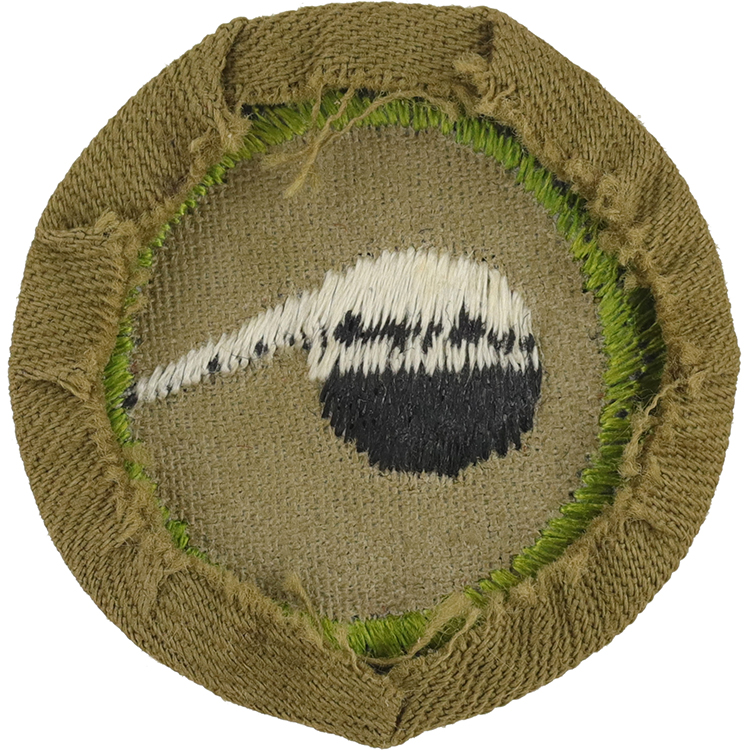
Fig. 1: Chemis-D2-Front
- Cloth: Fine twill
- Embroidery: Cotton lock stitch >

Fig. 2: Chemis-D2-Reverse
- Back: Plain NO imprint with starch

Fig. 3: Chemis-D2-mve1-front
- Cloth: Fine twill
- Embroidery: Cotton lock stitch >

Fig. 4: Chemis-D2-mve1-reverse
- Minor variation: Black lock stitch
Item Name: Chemistry 1942 - 1945
Item ID: Chemis-D2
Collector Rating: 1
Requirements 1930 until June 1953
Submit evidence of study and experimentation in Chemistry and demonstrate his ability to apply the knowledge gained in discussing points outlined in Part I, and carry out the experiments suggested in Part II.
PART I
1. In building a fire, one whittles or breaks sticks into small splints, starts the fire with a match, flint and steel, friction, or burning glass, and aids it with gentle fanning. Gentle fanning will aid, but violent fanning will extinguish a small flame. Very dry wood gives a hot fire; green or moderately wet wood will burn but give out little heat, while very wet wood will not burn. Discuss each point.
2. Suppose one has three very large bell jars or bottles inverted over a trough of lime water, thus enclosing air and sealing so that air can neither escape nor enter. Suppose one puts a boy into one, a lighted candle the size of the boy into the second, and a piece of phosphorus the size of the boy in the third. Soon the water will begin to rise in each. When the water has replaced 11% of the air in the first, the boy will collapse; when 6% of the air in the second is replaced, the candle will cease to burn; and when 21% of the air is replaced in the third, no more change will take place. Fully interpret and explain.
3. Give (a) a list of the sources of water
(b) a list of the uses of water
(c) a list of the impurities found in water
(d) a classification, with respect to injurious nature, of the impurities.
(e) the special problems confronted in obtaining, treating and storing water for drinking purposes.
4. A good Scout keeps his knife, axe and iron cooking utensils clean and dry, and as far as possible equips himself with aluminum canteens, etc. Explain.
5. Every boy uses salt in seasoning his food. Assume he has a salt mine and the whole world is dependent upon his mine and upon his knowledge of what might be done with it. Give a full discussion of what he might produce, provided all other chemicals and our present-day chemical machinery were available.
PART II
6. Prepare and collect two of the following gases:
Oxygen, hydrogen, chlorine and ammonia.
7. Find out which, if any, of five substances given him are carbonates, sulfides or chlorides.
8. Find out which, if any, of several liquids or solutions given him are acids or bases.
9. Extract metallic copper from its black oxide.
10. Give two experimental demonstrations that some substances catalyze certain reactions.



